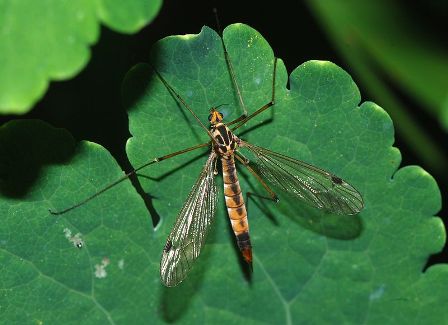Social Networking
It seems like everyone has a Facebook page nowadays.
But plants, animals, bacteria, and fungi were using social
networking before it was cool. Any given organism can have
hundreds of "friends" in an ecosystem. They might even
have more than you!
Fungi, like all decomposers, are part of an intricate food
web with many nutritional levels. As you can
see, fungi fit in at every level because they can feed on
producers as well as primary, secondary, and tertiary consumers.
For example, the false morel is commonly found on plant litter, so it breaks
it down and recycles the nutrients from the dead material back into the soil. Once they
are available again, a lot of organisms can use them including
the
common worm, bacteria like
Brevibacterium linens, and plants like the
jack in the pulpit, which grows in the same areas of North
America as the false morel.
the false morel is commonly found on plant litter, so it breaks
it down and recycles the nutrients from the dead material back into the soil. Once they
are available again, a lot of organisms can use them including
the
common worm, bacteria like
Brevibacterium linens, and plants like the
jack in the pulpit, which grows in the same areas of North
America as the false morel.
Although the species Gyromitra esculenta doesn't,
some species of morels form symbiotic associations with plants through ectomycorhizzae. This is when the
fungus forms a sheath around the root of the plant and increases
the surface area for nutrient absorption. The
fungus benefits from this relationship because it gains nutrients
from the tree, and the tree benefits because it gains more
surface area for absorption through the hyphae. The
picture on the left is an example of endomycorhizzae, where
hyphae grows inside the plant root.
Research has recently shown that species of insects from the
order Diptera use fungi to complete their life cycle. Metalimnobia quadrimaculata, a species of crane fly
(below) has been shown to develop on fruit bodies of ascomycota,
including Gyromitra speices. They can also use decomposing wood
and the dust at the base of mushrooms for nutrition.
These insects are called obligatory sapromycobionts, meaning
they depend on getting their nutrition from decomposing fungal
fruit bodies. They are endobionts (organisms that live beneath
the substrate) and most are saprophytes, using fungi like they
would other decomposing organic materials like plants or
animals. This relationship works because fungi have all the
nutrients that these insects need for development.
these insects need for development.
Surprisingly, the presence of toxins in the fruiting bodies
doesn’t inhibit the fly's development.
This could be because it doesn’t matter if there is damage to
the fruiting body if it has already dispersed its spores. Even
if the insects do damage the spores or asci, it usually isn’t
serious.
For more information on how its
toxin affects humans, see the toxicity page.
